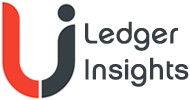Arca Labs has partnered with Tassat, the tokenized payment technology firm and tZERO the regulated broker-dealer to launch the Lynq settlement network. Rather than payments using bank money, the Arca-issued tokenized treasury fund TFND will act as the payment instrument. Market maker B2C2, Galaxy Digital, and Wintermute plan to onboard clients and US Bank will provide custody for the underlying Treasuries and cash. The settlement network will launch later this quarter.
One of the advantages of partnering with Tassat is its technology was used by Signature Bank and is currently used by Customers Bank for its instant payment network, which is popular with crypto institutions. Hence, many firms will already have integrated its technology. However, crypto institutions need to onboard to the network via tZERO which performs KYC and other compliance steps. The solution is based on the Avalanche blockchain network.
“Lynq is an end-to-end settlement utility built by the industry, for the industry,” said Rayne Steinberg, CEO of Arca; Zain Saidin, CEO of Tassat; and David Goone, CEO of tZERO. “Our goal is to provide a quality settlement service that can meet the liquidity, scale, and security needs of our digital asset clients, while maximizing capital efficiency for all network participants.”
Not only will the settlement network support 24/7 payments, but companies can earn a return on the money market fund (MMF) when their cash is idle.
“Mass institutional participation in the digital asset market requires robust infrastructure,” said Jason Urban, Global Head of Trading at Galaxy. “Galaxy is working to drive innovation across the ecosystem through strategic collaboration, and Lynq represents an important advancement by delivering real-time settlement capabilities that offer yield-bearing solutions tailored for institutional clients.”
Why money market funds for payments?
While the solution has the added benefit of providing a yield on the TFND, there’s another driver behind using a tokenized money market fund – the ability to execute settlement without resorting to banking networks. That motivation comes from the de-banking of the crypto sector, Operation Chokepoint 2.0.
Apart from Chokepoint, during the Biden administration, multiple attempts to create interbank payment networks were blocked. Recent FDIC freedom of information disclosures underlined how the USDF Consortium was repeatedly blocked from launching, despite attempts to meet regulator needs, such as shifting to a permissioned network. It eventually gave up.
Tassat always used permissioned infrastructure. It also attempted to launch an interbank network, but declined to comment on its lack of progress during the Biden era. Last year it started working with GlassTower to use tokenized MMFs for cross border payments.
Meanwhile, we believe the Arca TFND token is based on the ArcaCoin, its own tokenized MMF. To date its take up has been modest with just $430,000 in issuance, of which 91% is held in a single wallet.
A future vision of both institutional and personal wallets is the ability to switch instantly between different types of assets. A frictionless approach may reduce the need to keep significant assets in bank deposits. Lynq illustrates that longer term banks might have to offer better deposit rates to compete with other sources of yield.






